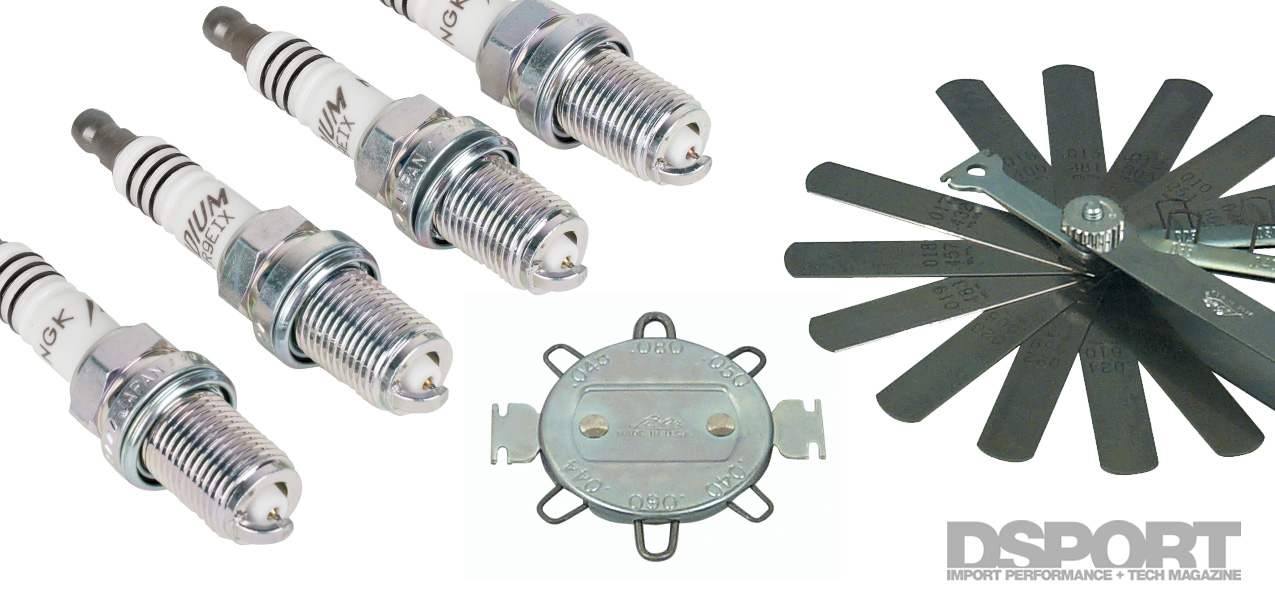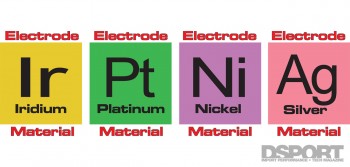A BETTER PLUG
If you are looking for maximum performance, there are certain spark plugs that are designed to minimize misfires or maximize the combustion of the air-fuel mixture. If you are looking for maximum service intervals, there are spark plugs that are designed for limited gap erosion, allowing them to function two to five times longer than conventional plugs. If you are on a limited budget, there may be plugs available that provide a heat range that’s optimized for your engine’s modifications and your driving style.
HOT OR COLD?
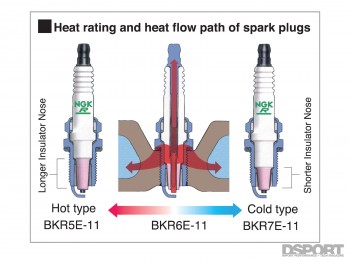 One of the most important considerations when choosing a replacement spark plug is being sure that the correct heat range is chosen. If the replacement plug that is chosen is too cold, fouling occurs. This leads to misfires, poor performance, increased emissions and reduced fuel economy. If the replacement spark plug has a heat range that is too hot, the results are even worse. The spark plug can become so hot that its temperature ignites the fuel before the spark ever has a chance to fire, this is termed “preignition.” Pre-ignition can lead to severe engine damage or melted electrodes at the very least. Most tuners end up using a plug that is one to two heat ranges colder than the heat range of the original equipment spark plug. However, ultra-high boost pressure or ultra-high compression ratios may require spark plugs that are three to four heat ranges cooler. Since the side effects of choosing a plug that’s too cold are much less problematic than the results of choosing a plug that is too hot, it’s always safer to start with a colder plug.
One of the most important considerations when choosing a replacement spark plug is being sure that the correct heat range is chosen. If the replacement plug that is chosen is too cold, fouling occurs. This leads to misfires, poor performance, increased emissions and reduced fuel economy. If the replacement spark plug has a heat range that is too hot, the results are even worse. The spark plug can become so hot that its temperature ignites the fuel before the spark ever has a chance to fire, this is termed “preignition.” Pre-ignition can lead to severe engine damage or melted electrodes at the very least. Most tuners end up using a plug that is one to two heat ranges colder than the heat range of the original equipment spark plug. However, ultra-high boost pressure or ultra-high compression ratios may require spark plugs that are three to four heat ranges cooler. Since the side effects of choosing a plug that’s too cold are much less problematic than the results of choosing a plug that is too hot, it’s always safer to start with a colder plug.
The length of the insulator will set the spark plug’s heat range,. The longer insulator nose will keep more heat in the spark plug, making a “hotter” plug. This heat will help prevent carbon fouling at idle and low-speed operation. However, a “colder” plug with a shorter insulator may be needed when horsepower levels are increased or wide-open-throttle operation is the norm.
To determine if your plug is of the correct heat range for your level of modifications and driving style, you can inspect your plugs after a pass on the dyno or a few miles of driving on the street. If the firing end of the plug is covered in black soot and the insulator is also covered in soot, the plug that you have chosen is too cold for your application. If the firing end of the plug has a tan, light brown or light grey appearance on the insulator and electrode, you’ve chosen a heat range that’s appropriate for your application. If the electrodes appear melted, rounded or blistering is apparent on the insulator, the heat range is too hot for your application.
| Ir | Pt | Ni | Au | Ag | |
|---|---|---|---|---|---|
| Melting Point (F) | 4499 | 3216 | 2647 | 1945 | 1760 |
| Strength (Kpsi) | 159 | 20 | 97 | 19 | 19 |
| Electrical Resistance | 2.09 | 4.17 | 2.69 | 0.9 | 0.63 |
| Hardness | 240 | 40 | 160 | 25 | 26 |
You may have seen some spark plugs advertise a “copper-core” construction. Spark plugs that utilize a copper-core construction will generally be superior in heat and fouling resistance when compared to plugs that do not have a copper-core. A word of warning about heat range nomenclature: some spark plug manufacturers use higher numbers to indicate a colder plug (NGK, Denso, HKS, A’PEXi, GReddy), while others use lower numbers to indicate a colder plug (Champion, AC Delco, Bosch). Always check the manufacturer’s catalog or web site to make sure that you are ordering the correct heat range.
SPARK VOLTAGE
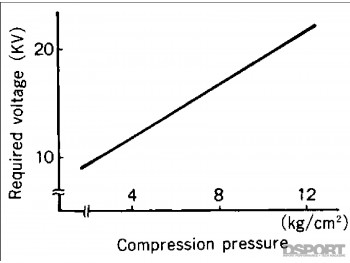
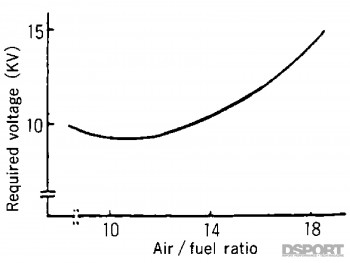 How does a spark occur? All spark plugs have air gaps. The gap is the space between the plug’s center and side electrode. When the ignition system is triggered, high voltage electrical energy is sent down through the plug’s center and side electrode. When the ignition system is triggered, high voltage electrical energy is sent down through the plug’s center electrode. If the voltage of this energy is high enough, a spark occurs when the energy jumps from the center to the side electrode. So how much voltage is needed for a spark to be produced? The answer is that it varies. Under certain conditions 10,000 volts may be enough voltage, where under other conditions 40,000 to 50,000 volts may be required. Higher compression ratios and high boost levels significantly raise voltage requirements.
How does a spark occur? All spark plugs have air gaps. The gap is the space between the plug’s center and side electrode. When the ignition system is triggered, high voltage electrical energy is sent down through the plug’s center and side electrode. When the ignition system is triggered, high voltage electrical energy is sent down through the plug’s center electrode. If the voltage of this energy is high enough, a spark occurs when the energy jumps from the center to the side electrode. So how much voltage is needed for a spark to be produced? The answer is that it varies. Under certain conditions 10,000 volts may be enough voltage, where under other conditions 40,000 to 50,000 volts may be required. Higher compression ratios and high boost levels significantly raise voltage requirements.


